Towards a circular economy: how to turn our problems into an opportunity
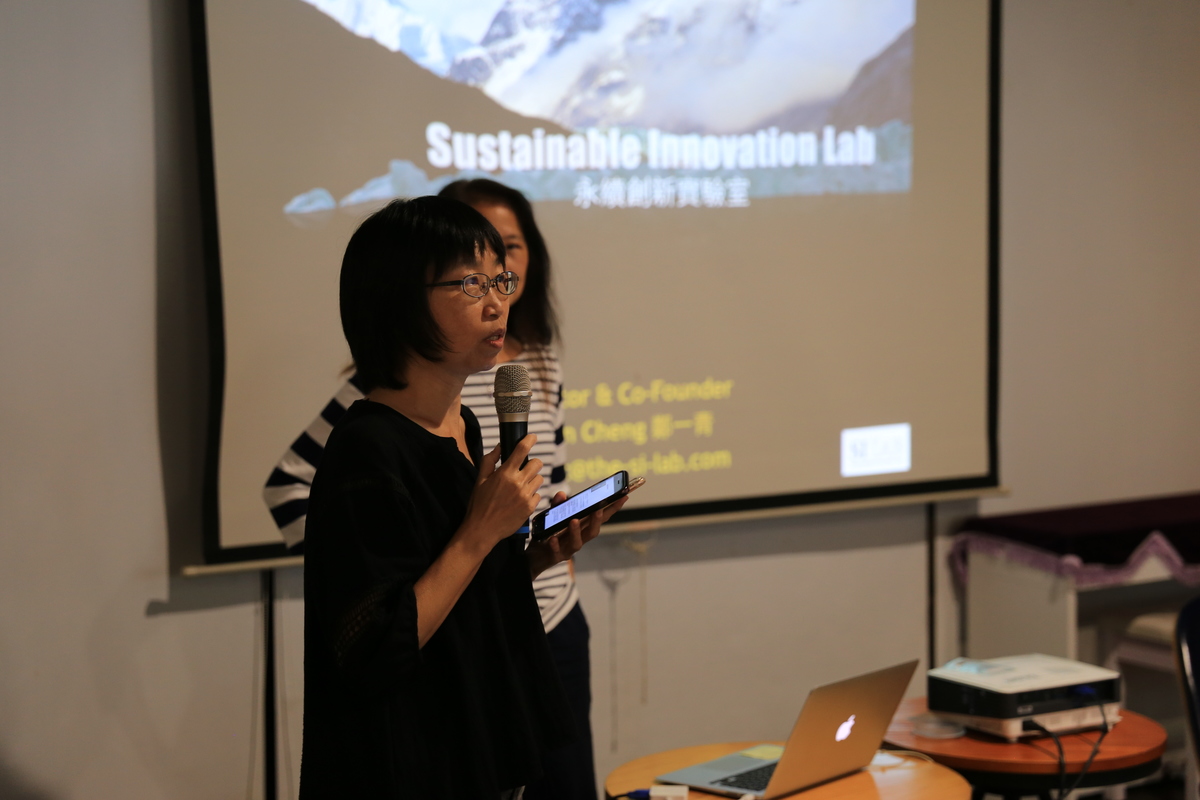
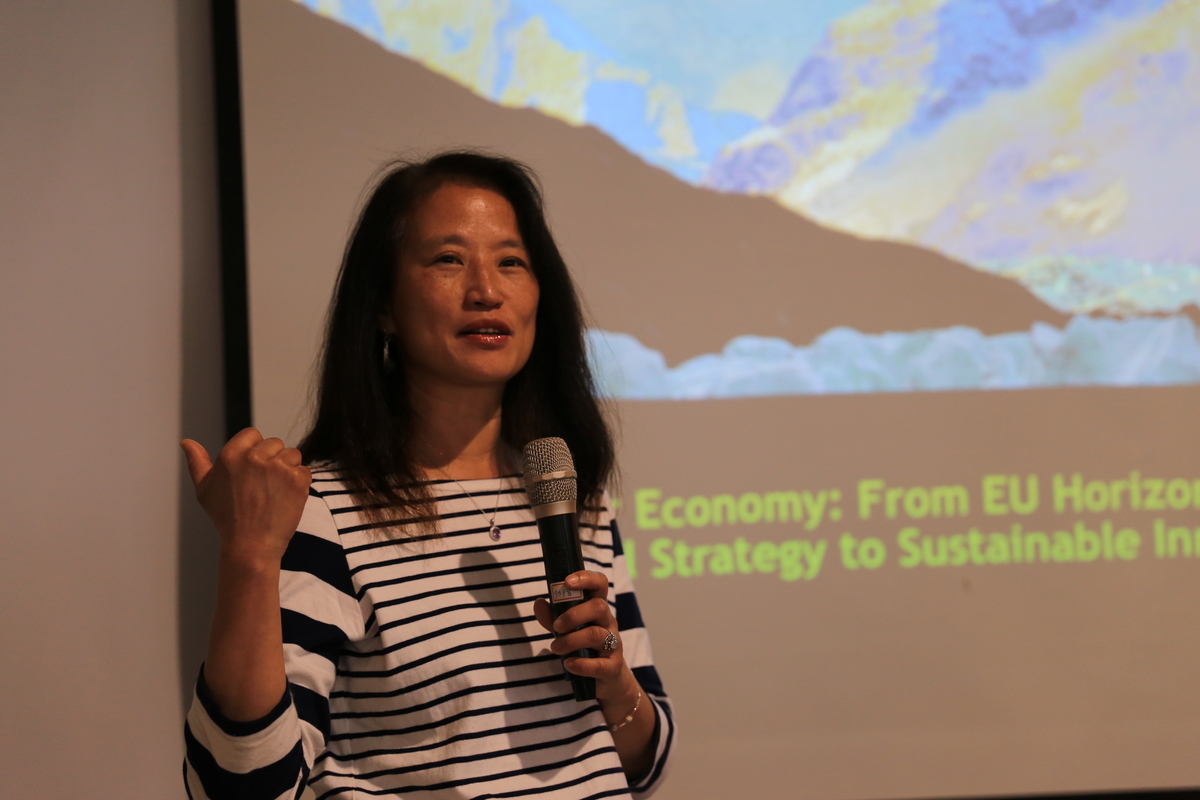
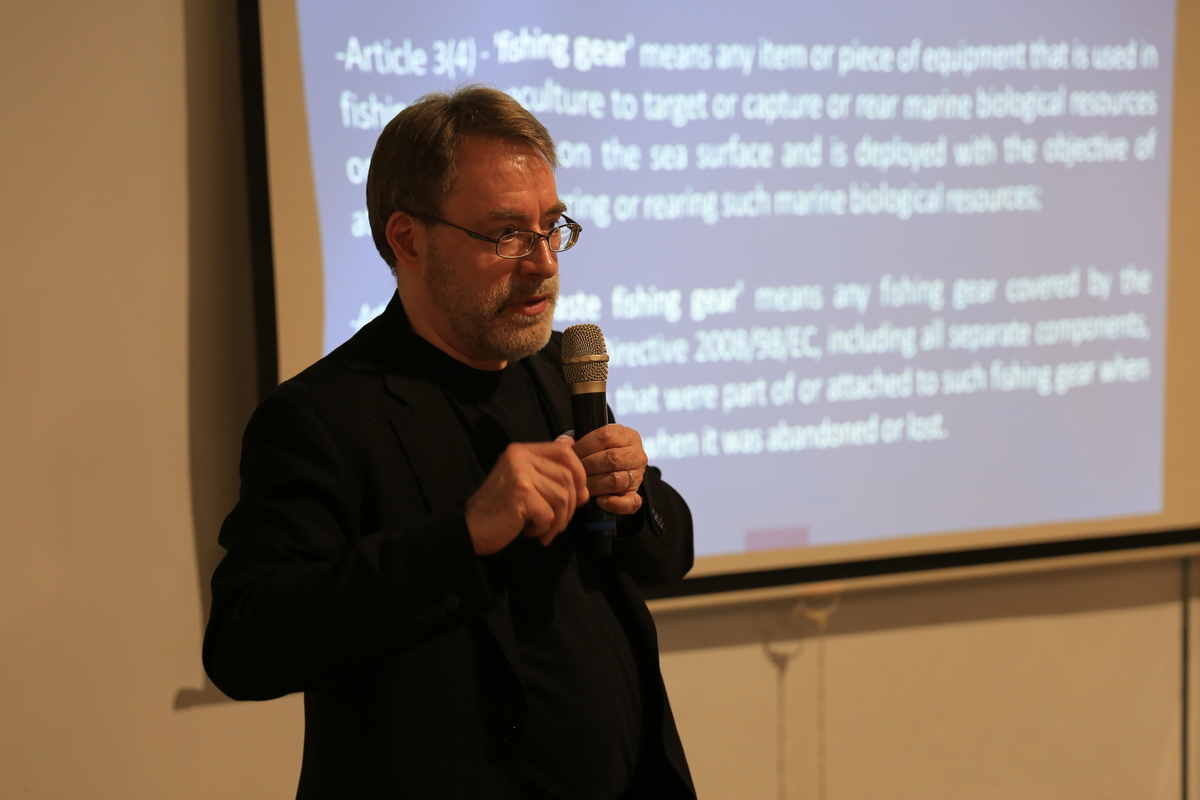
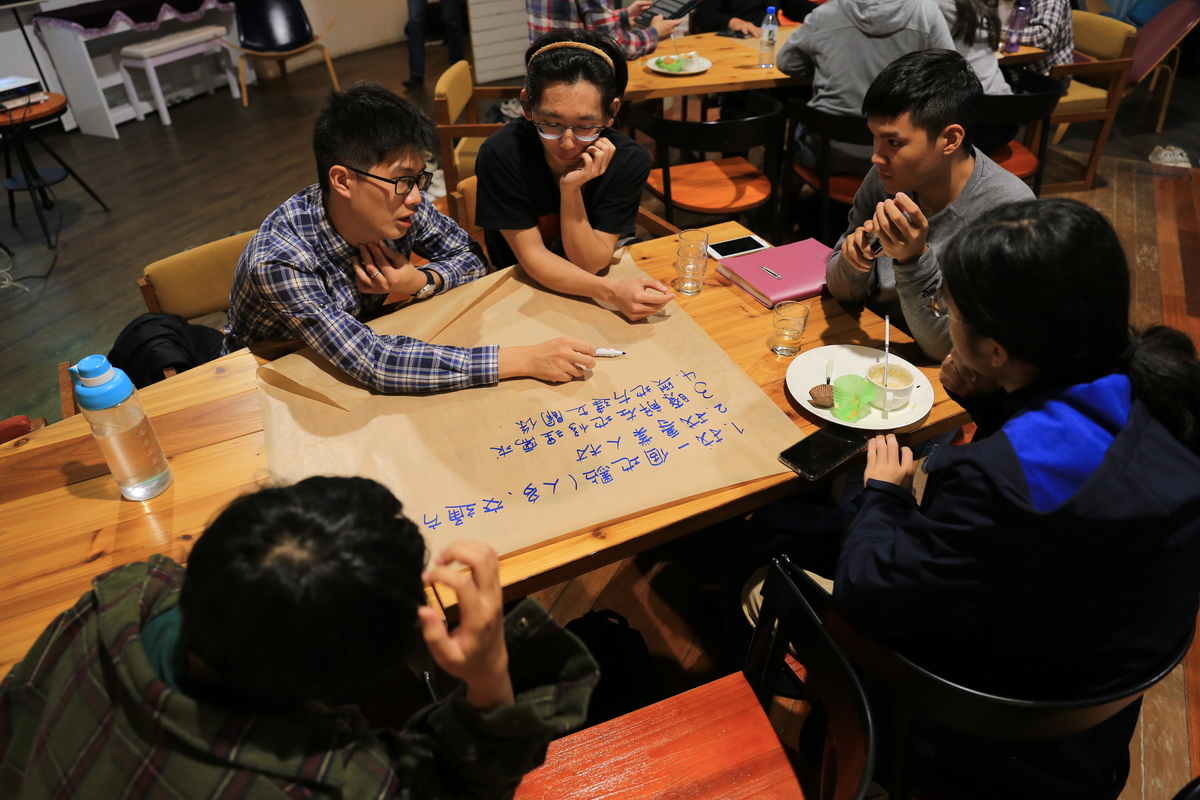
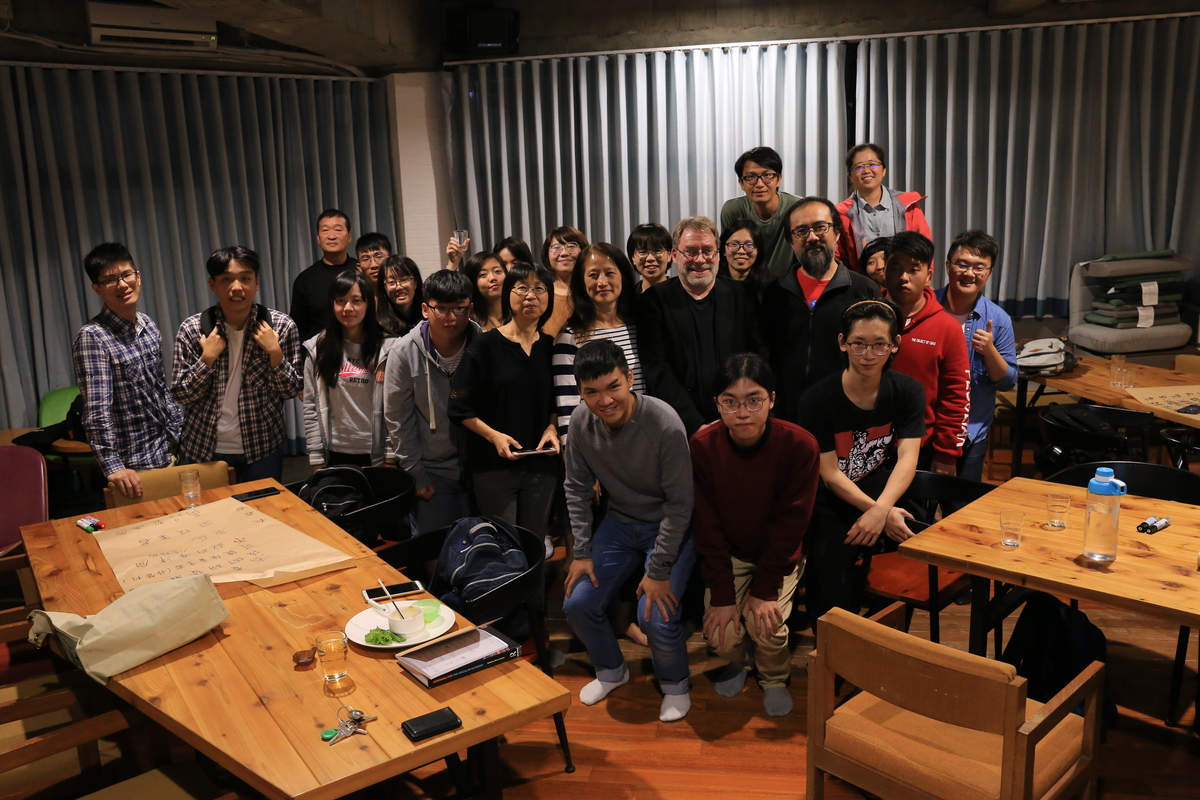
Did you know fire hoses and pineapples can be turned into fashionable bags sold in Harrods, while abandoned fishing nets are a perfect material for office chairs? We can solve our environmental problems by changing our approach to things – circular economy is a new global trend. On December 3rd, 2019, students of the Department of Sociology of National Sun Yat-sen University attended an international mini workshop – “Towards a Circular Economy” in 73 Steps Vegan Café on campus, led by NSYSU associate professor Hua-Mei Chiu. Two special guests gave speeches: prof. Martin Charter – founder and director of the Centre for Sustainable Design at the University for Creative Arts in the UK and I-Chin Cheng - founder and director of Sustainable Innovation Lab in the UK.
More efficient use of resources will not only bring substantial environmental benefits but also “bring net savings for European businesses of even up to EUR 600 billion, boost GDP and create new jobs”, said I-Chin Cheng. Almost half of Europe’s waste ended up on landfills in 2012. To change this state of affairs, European governments adopt new policies to increase the use of economic instruments to minimize waste. The business world is making a contribution as well. Plastic pollution of marine waters has become a key issue in recent years; European companies respond to the crisis by producing plastic-like food packaging made of agricultural waste (RAP, UK) and cellulose (VTT, Finland), and edible meal trays (PriestmanGoode, UK) – a perfect option for food delivery companies and airlines. Bio-Bean from the UK came up with the idea of recycling coffee ground waste into biofuel. It is not common knowledge that the textile industry is the second-largest polluting sector in the world. QMILK, a German startup, responded to it by recycling discarded milk into textiles. Companies outside of Europe take action as well: Apple started turning waste metal from electronic devices into gold phone cases, while Sekisui from Japan minimizes waste of construction materials by building personalized houses, repairing and rebuilding them.
During the workshop, students of environmental sociology could listen to the lectures of Prof. Charter and Director Cheng, who both are the authors of the book – “Designing for the Circular Economy”. Prof. Martin Charter spent 30 years working on sustainability with particular focus on electronic devices – how to make them sustainable from the design stage to production. He said, that “80% of the value of a product for circular economy depends on its design”. In the age of the Fourth Industrial Revolution, we need new infrastructure and system to recirculate resources. Citizens, businesses and governments all have to be engaged in the debate. Some companies are already adapting to the megatrend of circular economy, which implies extended producer’s responsibility, for example, Phillips is trying to better service its devices and reuse the materials of the products. IFIXIT sells tool kits and shows netizens how to repair different home devices. Nowadays, many products are “designed for death” to pressure us into consuming more. To prolong the life of electronic devices and other things, “Repair Cafés” were first set up in the Netherlands in 2009. Since then, the number of Repair Cafés has grown rapidly across Europe. Nowadays, 1973 Repair Cafés joined the worldwide network of repair. The Cafés are a grassroots social initiative where people get together and share knowledge. According to the Global Repair Café Survey conducted by Prof. Charter on 317 respondents, about 63% devices were successfully repaired, saving them from ending up on landfills, reducing CO2 emissions and saving citizens’ money.
The idea of circular economy is to “turn our problems into opportunities and notice the value of waste”, said prof. Charter. We are facing a large-scale problem of plastic pollution of oceans. Fishing gear (nets and ropes) constitute between 10% and 70% of the trash flowing in oceans, posing a threat to marine life. However, disposed fishing nets are a great material that can be recycled into carpet tiles and swimwear (ECONYL®), skateboards, office chairs, bracelets, boots, mats, and can even be used for 3D printing! Material recycling also creates tremendous job opportunities.
In recent years, NSYSU campus has made significant progress in becoming a greener, smarter and more sustainable place, having installed a power monitoring system, solar photovoltaic system, heat pumps and solar water-heating system, replacing old air conditioners with more modern eco-friendly versions and growing more greenery on campus. But how can NSYSU incorporate the idea of circular economy on campus? Speaker I-Chin Cheng said that the key is to bring together people and resources. The teachers can assign a task to the students to find out what can be done on campus, or a circular economy team can be brought together to start developing a project. Prof. Martin Charter said, that “there is two elements to it: one is what you can do to the estates, wider university functions, the other key is the link to the curriculum”. Sustainability can be integrated into the curriculum and campus activities: food waste and packaging reduction can be a project. This might be difficult as the curriculum is down to the lecturers and professors, so “there needs to be top-level leadership”.
After inspiring lectures, the students, joined by the representatives of Chi-Mei Community College and Hsin-hwa Community College, took action, debating on how to set up a repair café in Kaohsiung and what is needed to discuss an action plan to recycle fishing nets. After discussing, sharing and commenting, the event organizer Prof. Hua-Mei Chiu, who is also the coordinator of the mini-program of “Sustainable Development and Social Innovation”, has encouraged students to enhance their capability to take part in innovative initiatives for sustainability.
(Photos provided by Department of Sociology of National Sun Yat-sen University)
More efficient use of resources will not only bring substantial environmental benefits but also “bring net savings for European businesses of even up to EUR 600 billion, boost GDP and create new jobs”, said I-Chin Cheng. Almost half of Europe’s waste ended up on landfills in 2012. To change this state of affairs, European governments adopt new policies to increase the use of economic instruments to minimize waste. The business world is making a contribution as well. Plastic pollution of marine waters has become a key issue in recent years; European companies respond to the crisis by producing plastic-like food packaging made of agricultural waste (RAP, UK) and cellulose (VTT, Finland), and edible meal trays (PriestmanGoode, UK) – a perfect option for food delivery companies and airlines. Bio-Bean from the UK came up with the idea of recycling coffee ground waste into biofuel. It is not common knowledge that the textile industry is the second-largest polluting sector in the world. QMILK, a German startup, responded to it by recycling discarded milk into textiles. Companies outside of Europe take action as well: Apple started turning waste metal from electronic devices into gold phone cases, while Sekisui from Japan minimizes waste of construction materials by building personalized houses, repairing and rebuilding them.
During the workshop, students of environmental sociology could listen to the lectures of Prof. Charter and Director Cheng, who both are the authors of the book – “Designing for the Circular Economy”. Prof. Martin Charter spent 30 years working on sustainability with particular focus on electronic devices – how to make them sustainable from the design stage to production. He said, that “80% of the value of a product for circular economy depends on its design”. In the age of the Fourth Industrial Revolution, we need new infrastructure and system to recirculate resources. Citizens, businesses and governments all have to be engaged in the debate. Some companies are already adapting to the megatrend of circular economy, which implies extended producer’s responsibility, for example, Phillips is trying to better service its devices and reuse the materials of the products. IFIXIT sells tool kits and shows netizens how to repair different home devices. Nowadays, many products are “designed for death” to pressure us into consuming more. To prolong the life of electronic devices and other things, “Repair Cafés” were first set up in the Netherlands in 2009. Since then, the number of Repair Cafés has grown rapidly across Europe. Nowadays, 1973 Repair Cafés joined the worldwide network of repair. The Cafés are a grassroots social initiative where people get together and share knowledge. According to the Global Repair Café Survey conducted by Prof. Charter on 317 respondents, about 63% devices were successfully repaired, saving them from ending up on landfills, reducing CO2 emissions and saving citizens’ money.
The idea of circular economy is to “turn our problems into opportunities and notice the value of waste”, said prof. Charter. We are facing a large-scale problem of plastic pollution of oceans. Fishing gear (nets and ropes) constitute between 10% and 70% of the trash flowing in oceans, posing a threat to marine life. However, disposed fishing nets are a great material that can be recycled into carpet tiles and swimwear (ECONYL®), skateboards, office chairs, bracelets, boots, mats, and can even be used for 3D printing! Material recycling also creates tremendous job opportunities.
In recent years, NSYSU campus has made significant progress in becoming a greener, smarter and more sustainable place, having installed a power monitoring system, solar photovoltaic system, heat pumps and solar water-heating system, replacing old air conditioners with more modern eco-friendly versions and growing more greenery on campus. But how can NSYSU incorporate the idea of circular economy on campus? Speaker I-Chin Cheng said that the key is to bring together people and resources. The teachers can assign a task to the students to find out what can be done on campus, or a circular economy team can be brought together to start developing a project. Prof. Martin Charter said, that “there is two elements to it: one is what you can do to the estates, wider university functions, the other key is the link to the curriculum”. Sustainability can be integrated into the curriculum and campus activities: food waste and packaging reduction can be a project. This might be difficult as the curriculum is down to the lecturers and professors, so “there needs to be top-level leadership”.
After inspiring lectures, the students, joined by the representatives of Chi-Mei Community College and Hsin-hwa Community College, took action, debating on how to set up a repair café in Kaohsiung and what is needed to discuss an action plan to recycle fishing nets. After discussing, sharing and commenting, the event organizer Prof. Hua-Mei Chiu, who is also the coordinator of the mini-program of “Sustainable Development and Social Innovation”, has encouraged students to enhance their capability to take part in innovative initiatives for sustainability.
(Photos provided by Department of Sociology of National Sun Yat-sen University)
Click Num:
Share
